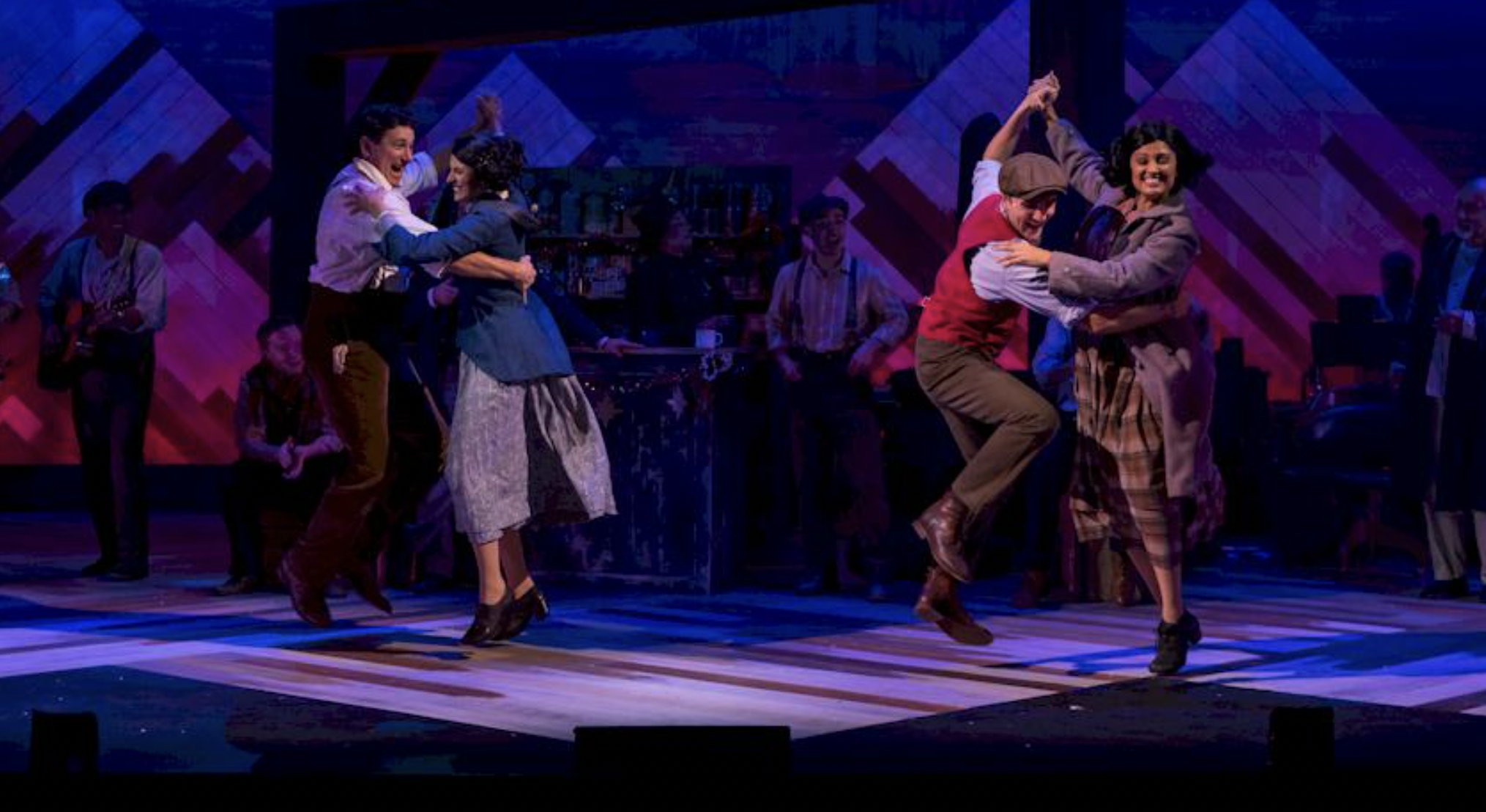Theatre review: Energized cast and direction raises Dolly Parton's Smoky Mountain Christmas Carol far above its humble base material
No campy Hee-Haw, the elaborately staged musical is an earnestly heartfelt tribute to the country icon’s old-timey roots
The rowdy, rootin’ tootin’ choreography brings added energy in Dolly Parton’s Smoky Mountain Christmas Carol. Photo by Moonrider Productions
The Arts Club presents Dolly Parton’s Smoky Mountain Christmas Carol at the Stanley Industrial Alliance Theatre until January 2
FROM AMERICANA-LOVING Jack White to unrepentant freak-flag-waver Miley Cyrus, everyone loves country queen Dolly Parton. That may go some ways to explaining the enthusiastic turnout at the Arts Club Theatre’s big return to the historic Stanley stage.
Crowds eagerly lined up in the downpour, vax cards at the ready, under the Christmas-bough-bedecked neon marquee for the opening night of Dolly Parton’s Smoky Mountain Christmas Carol. Inside, the packed lobby and auditorium felt distinctly like “before times”, audiences ready to see a holiday show that would provide uplift.
On that front, Dolly Parton’s Smoky Mountain Christmas Carol delivers. Director Bobby Garcia’s dynamic staging raises this show of simple ditties and downhome values far beyond its humble base material. It combines energized music and dance with an openhearted commitment from a wall-to-wall-talented cast.
The production is not the campy Hee-Haw parody you might expect—nor is it tacky-terrific like the TV Holly Dolly Christmas special. No, Dolly Parton’s Smoky Mountain Christmas Carol is an earnestly heartfelt tribute to her old-timey roots—and how love and family can bring riches in a way money never will. How much you enjoy it may have a lot to do with what kind of pandemic mood y’all are in—and the live-theatre-starved masses who turned out in force Wednesday night gave it a hooting-and-hollering standing-O.
Set in the Depression-era Appalachians, the new musical recasts Scrooge as a miserly owner of a company mining town. On Christmas Eve, he’s busy evicting and foreclosing. Some of the era- and locale-specific details are fun here—moonshine hidden in maple-syrup jugs and dining tables being chopped up for firewood feel straight from Dolly lore. And the book by David H. Bell has taken pains to emphasize the story of poor but plucky townsfolk working together against hardship.
The best moments draw creatively from the idiosyncrasies of Eastern Tennessee—especially in the Ghosts of Christmas Present and Future (who we won’t give away here, other than to say Andrew Wheeler and Kathleen Nisbet are show highlights).
The cast gives everything it’s got to the sometimes-cornball setup. The Tennessee drawls are never distracting, and the script is loaded with colourful vernacular. Scrooge is mad as “a mule eating bumblebees” or “a wet rooster”, and folks can’t wait to uncork the dandelion wine and sink their teeth into a juicy holiday roast possum.
The highlight, though, is the singin’ and hoofin’ here. Chelsea Rose brings soulful, rafter-shaking resonance to the ballad “Appalachian Snow”, and Synthia Yusuf and Jonathan Winsby harmonize a beautiful “Three Candles”. Julio Fuentes’s choreography—a rowdy, rootin’ tootin’ mix of square dance, two-step, jigs, and body-slapping numbers—is exceptional, and dang it if the triple-threat cast doesn’t pull it off. The fiddle and banjo moments, and a bluegrassy overture to Act II—complete with tricked-out washboard—do make you yearn for more of those authentic Nashville sounds to be spotlighted in the overall score.
Both Scrooges are standouts—Adams’s hollering but surprisingly empathetic older, oatmeal-eating version, and Winsby’s confused and disillusioned younger one. Madeleine Suddaby brings hilarious physicality to multiple characters, and Charlie Gallant somehow manages to jump back and forth between the extremes of his dual roles as both Marley and Cratchit.
Shizuka Kai’s set is a busy, ever-shifting mix of company-store shelves, wagon wheels-turned-clocks, and iron beds, with what look like barn-floor planks used to pattern out Appalachian peaks in the background. One of the most ingenious touches is a little toy train that steams across the top of the stage—running backward when we rewind into the past. And Carmen Alatorre’s costumes are period-perfect.
Still, at the risk of sounding Scrooge-like in the face of all the plot’s positivity and homespun charm, some of the messages in Smoky Mountain Christmas can feel hokey, and its attempts at more serious subjects—like a mining strike—are brushed over.
Some tunes are lyrically repetitive, and those who prefer their Christmas songs secular will find at least one or two leaning too heavily on southern faith (hello, Dolly-and-Kenny hit “Circle of Love”, one of the few songs that wasn’t written specifically for this show). Dolly fans should know that not every number on this roster fulfills the promise of a songwriter who penned “Jolene”—one of the greatest country songs of all time.
Still, the audience was fully onboard for this ride into Eastern Tennessee—the chance to escape to Dollywood for the holiday season. No one’s in the mood to say “bah, humbug” to live-theatre gatherings these days. As artistic director Ashlie Corcoran said in her opening remarks, “I’ll never, ever take that for granted again.” Yeehaw to that.














